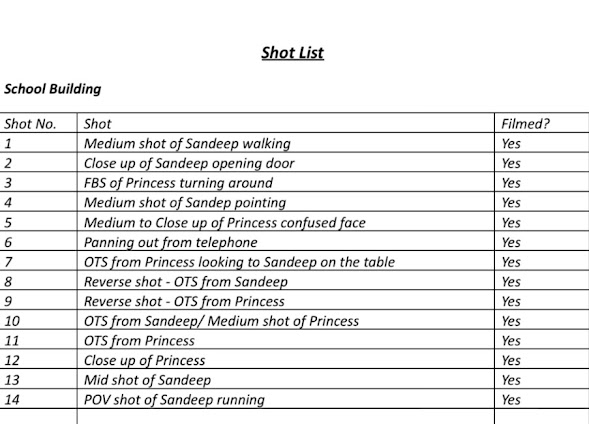Editing-750 word analysis
PARASITE- LAST SCENE (BIRTHDAY MASSACRE)
The birthday massacre scene from Parasite
(2019) reveals how editing can enhance storytelling and heighten tension. The
director utilises a range of editing techniques to juxtapose the chaos and
violence of the unfolding events with the celebration and normalcy at the Park
family’s garden party. The sequence’s editing is cleverly crafted and blends
with cinematography, sound, and mise-en-scène to create an emotionally
impactful moment that reflects the film’s underlying themes of class struggle
and desperation.
The scene employs continuity
editing to ensure clarity amidst the
chaos, guiding the viewer through multiple perspectives within the house and
garden. The camera alternates between the ongoing violence in the kitchen and
the birthday party outside. As tensions rise, the use of cross-cutting becomes
vital, switching between characters in different parts of the house. This
parallel editing contrasts the carefree lives of the wealthy Park family with
the hidden desperation of those they exploit.
The timing of each cut intensifies the chaos,
particularly when Geun-sae emerges from the basement and begins his attack. For
example, when he grabs the knife and rushes into the garden, the editor uses
quick cuts to focus on his movement while
also showing the reactions of others through their facial
expressions. The use of match-on-action is also effectively utilised: such as when Geun-sae
lunges toward Mrs. Kim, with the action continuing seamlessly across multiple shots. This technique allows the audience to
follow the violent sequence without confusion, despite the rapid pace.
Close-ups of the characters’ faces emphasize their shock and horror, particularly the Parks’
stunned reactions as their world of comfort is violently disrupted. These shots
contrast with the raw desperation and anger in the expressions
of Ki-taek and Geun-sae, reinforcing the class divide. Tracking shots follow
the movements of the key actors, particularly during moments of action, such as
Geun-sae’s stumbling charge. Wide shots of the garden provide context, showing the full scale
of the disruption and highlighting the contrast between the pristine setting of
the party and the bloodshed unfolding within it.
Sounds are also crucial to the effectiveness of the editing in this sequence.
The diegetic sound of screams, footsteps, and the clattering of objects can clearly
be identified and heighten the sense of panic. Meanwhile, the non-diegetic sound
subtly underscores the rising tension, with music building in intensity as the
scene progresses. The editor uses sound bridges to connect different parts of the scene, such as the
continuation of party chatter overlapping with shots of the basement conflict.
This technique maintains continuity and reinforces the juxtaposition of the two
worlds: the Park family’s celebration and the hidden violence simmering beneath
the surface.
Mise-en-scène also plays a critical role in this violent scene.
The brightly decorated garden, with
balloons and a buffet, is a stark contrast to the dark, claustrophobic basement
where Geun-sae’s rage is unleashed. This visual representation is emphasized by the editor’s strategic intercutting
between these two spaces, highlighting the stark differences between the lives
of the wealthy and the impoverished. Costumes
further reflect this divide, as the pristine outfits of the Park family and
their guests are juxtaposed with the bloodied and displeasing appearances
of Geun-sae and Ki-taek. The editing ensures these visual contrasts are clearly
seen in close-ups, medium shots, and long shots of each character
in this scene: whether they are of upper class or lower class.
Lighting and colour also contribute to the
scene’s impact, with natural daylight in the garden, emphasizing the illusion
of happiness and normalcy. This is contrasted by the dim, shadowy lighting of
the basement and kitchen, where the real, tenseful drama unfolds. The editor
uses these lighting contrasts to heighten the tension, cutting between the
brightness of the party and the darkness of the violence to underscore the
apparent divide. Props, such as the birthday cake and the knife, are
given further prominence through various shots, drawing attention to
their symbolic significance in the scene.
The birthday massacre sequence from Parasite
is quite clearly an immaculate scene that shows how editing, alongside other
aspects of media techniques, can enhance a movie and make it engaging for the audience.
By combining continuity editing, cross-cutting, and multiple other
editing strategies, the film builds tension and delivers a gut-wrenching
emotional impact. The integration of editing with cinematography, sound, and
mise-en-scène creates a moment that is visually striking and deeply impactful,
encapsulating the film’s critique of class inequality and human desperation.
This scene exemplifies Bong Joon-ho’s mastery of film language and classifies Parasite
as a modern classic.

Comments
Post a Comment